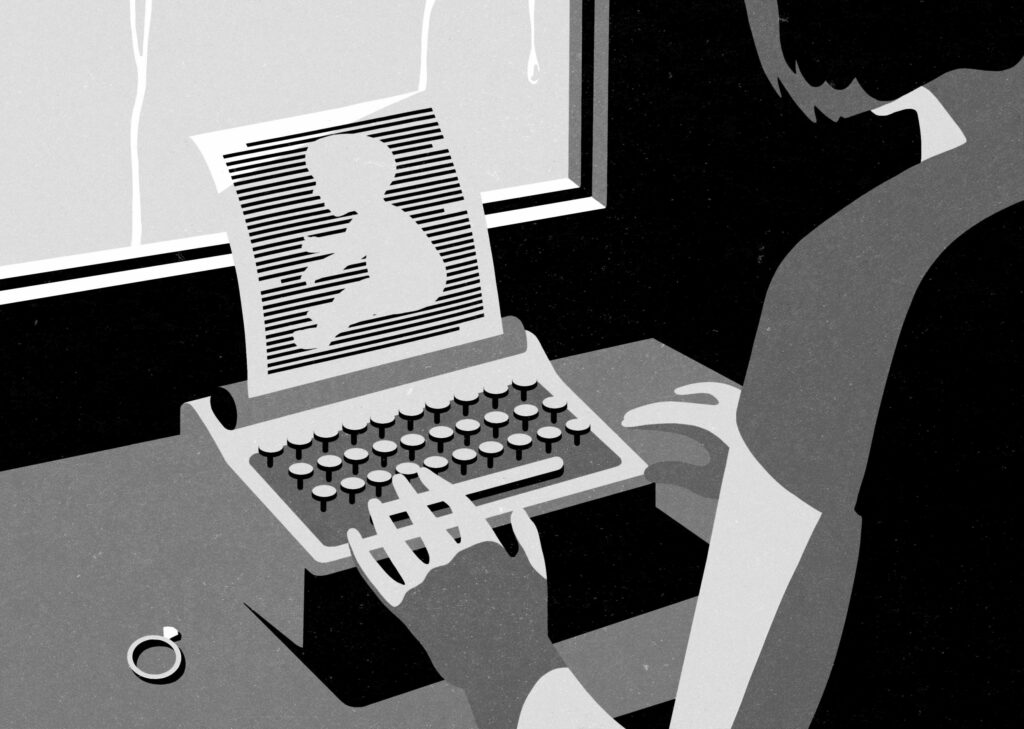Perhaps no words suffice to capture the formidable anguish and sorrow following the death of a child. With her remarkable fourth novel, Wait Softly Brother, Kathryn Kuitenbrouwer attempts to fill that void. On the surface, the book concerns a middle-aged author who writes a story about her stillborn brother, Wulf, hoping to “enliven him — as if words can do the alchemy of bringing him back to life.” But there’s an autobiographical twist. That imagined author is Kuitenbrouwer herself, who did lose her brother and embarked on a journey to “let fiction do the work of healing.” Indeed, this is not a traditional novel but an unorthodox piece of autofiction. Ostensibly authentic accounts of the experiences of an author, works of autofiction also incorporate imagined details, deliberately blurring the line between objective and subjective truth. Accordingly, Wait Softly Brother dances brilliantly between Kuitenbrouwer’s real life and the fictional narrative she concocts about it.
In its opening pages, the novel offers a deceptively familiar story. Exhausted by “twenty years of frustration, fights that give in to incremental change, that end in lackadaisical, predictable backsliding,” Kathryn leaves her husband, Matthew, and her teenage sons, Magnus, Ross, and Harry, and returns to her rural childhood home. The “godforsaken plot” is located near Stirling, Ontario, a village some three hours northwest of Toronto that’s “prone to bog and cedar copse, sweet air, mosquitoes and a history of depression.” For a period of forty days — the Biblical symbolism is inescapable — she struggles to assemble a coherent narrative about her late brother and wrestles with conflicted feelings about abandoning her family: “When you actually go ahead and do it, it’s not at all like you thought.”
While her elderly parents, known only as “Mum” and “Dad,” are protective of Wulf’s memory and wary of digging up the pain around his death, Kathryn feels entitled to his story. She is desperate to untangle the threads of her family’s heartache and understand how memory and time have affected their senses of self and relationships with one another: “What is the difference between a ghost and a memory, I wonder, and where does adoration go when it goes?” Eventually convinced, her parents enlist her to clean out the pig shed where they’ve stored old photos and letters. In the process of examining these archives — which are thoughtfully embedded as images throughout the text — Kathryn is inspired to write another story. This one’s about Russell Boyt, her “unstable” great-great-grandfather, who was apparently a soldier in the American Civil War.
Late into the evenings, Kathryn studies her family’s “memory repository” and writes on an “old mildew-spattered Remington portable,” detailing the violence of Boyt’s life and the horrors of war, contemplating the natures of personal and collective trauma. In her distant ancestor, Kathryn finds “some sympathetic corollary.” Her marriage and his war were both “compliant to the dominant paradigm,” which is to say that the two of them are both victims of “falling into a role set out for you by society.” Chapters of the story about Boyt are nested within the autofiction; at first, they may strike readers as out of place. But the method behind that apparent disorder becomes clear as details of Kathryn’s fictional narrative circle back to her real life and provide the writer solace and wisdom in facing her own problems. Kathryn comes to understand that writing about Boyt, “like a great snake eating its own tail, is just another way of seeking myself.”

Blurring lines between objective and subjective truth.
M.G.C.
Meanwhile, the autofiction takes on a dreamy quality. Kathryn recalls playing in the woods and swimming with Wulf, though, as her parents point out, such incidents wouldn’t have been possible: “That — none of it — ever happened.” Kathryn discovers a sealskin and imagines stories of her great-grandmother McIver, who according to family mythology was a “selkie,” or seal-woman, one of a class of “amphibians who can pull their sealskin off and cavort like people.” Kathryn senses a kinship with this ancestor who finds herself “torn between her responsibility on earth, to her babies and her man, and her yearning for that fluid, more-than-human self.” The selkie “longs for an unheard‑of autonomy” as she comes to the difficult realization that she must choose between keeping her family together and setting off on her own: “If she stays, she loses herself, and if she goes, she loses her children.” As Kathryn struggles to make sense of the expectations and obligations that weigh her down, she realizes that she is not the only one undergoing a transformation. Her mother’s health has begun to decline and with it her fierce determination to protect the family secrets — including the truth about Wulf.
Wait Softly Brother effectively weaves the world of the living and the world of writing together to convey the complicated linkage between memory and mythology. By so ably uniting threads of her real and imagined stories, Kuitenbrouwer demonstrates that autofictions may function as effective resolutions between fiction and reality. As the imagined Kathryn declares, “Lives are stories or stories tucked into other stories.” Part and parcel of this accomplishment, the emotionally brave novel takes readers deep into a richly imagined portrait of pain and sorrow. It may serve well to strengthen and sustain them through their own difficulties.
Michelle Sinclair wrote the novel Almost Visible. She lives in Ottawa.

